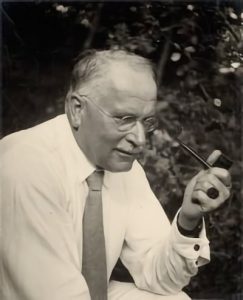Article index
The song of the shaman
The word " shaman " - indicates Google - is among those that recur most frequently in the chronology of web research. Both in etymological research and in that of the filmed documents.
When you think of the shaman as you imagine it.
The Treccani Encyclopedia says that:
"Through ritual songs and dances rhythmic to the sound of the drums he reaches a state of ecstasy".
 The shaman is considered a healer and an intermediary between the known world and the supernatural.
The shaman is considered a healer and an intermediary between the known world and the supernatural.
He is an expert in communicating with spirits through the change of his state of consciousness. He travels in the reality of the parallel worlds, where he acquires wisdom and power.
 Carl Gustav Jung - the father of analytical psychology - is also known outside of his area. But not everyone knows that his close collaborators called him - in a low voice - "the shaman" .
Carl Gustav Jung - the father of analytical psychology - is also known outside of his area. But not everyone knows that his close collaborators called him - in a low voice - "the shaman" .
Removed in 1913 from the teachings of Sigmund Freud, Jung modified his orientation and expanded analytical research from the history of the individual to that of the community.
In his book Libido writes: "There is a collective unconscious as well as an individual unconscious, which in archetypes finds its symbolic representation. The life of the individual considers himself as an evolutionary path, called the process of identifying and manufacturing the personal self.
Process that needs a comparison with individual unconscious and collective unconscious ".
Michael Smith, American clinical psychologist great specialist in Jung and shamanism - as well as medical anthropology - wrote a book entitled Jung and shamanism .
The author explores differences and affinities between Jungian shamanism and psychology. Both rooted in a model of life that focuses on the perception of the heart.
"Adventing us in this book means knowing shamanic initiations, dissociations, despair, loss of the soul " writes Michael Smith.
"But also the therapeutic power of rites, ecstasy and altered states of consciousness. It means discovering things that we do not know about the role of talismans and amulets, compared to the relapse on the collective unconscious. In addition to everything that psychotherapy can use today ".
I read this book with pleasure, even if it requires some attention.
It is a detailed history of shamanism.
Full of details and interesting news.
In fact, what is sometimes erroneously considered a ritual linked to beliefs and superstitions, here is analyzed and evaluated in the practical-scientific application of the panorama of psychology.
Read the article: the importance of singing and voice in ethnomusicology










I am doing a research on spontaneous singing, and I thank infinitely for coming into contact with different connections. Some imputs have helped me understand better. Thank you.
Thank you very much Susanna for your comment. We at Siing is committed every day to disseminate and build bridges and connections so that singing can be a tool of beauty and growth.